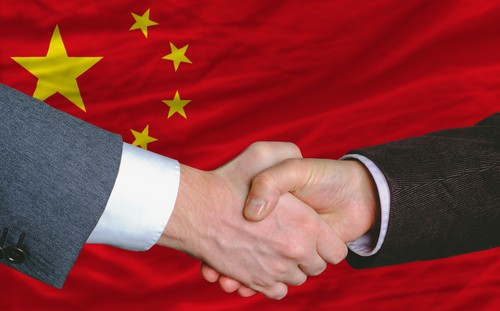Hana no ke kālepa kope. ʻO kā mākou Algo e wehe a pani i nā kālepa.
Hāʻawi ka L2T Algo i nā hōʻailona waiwai nui me ka liʻiliʻi liʻiliʻi.
24/7 kālepa cryptocurrency. I kou hiamoe ʻana, kālepa mākou.
10 mau minuke hoʻonohonoho me nā pōmaikaʻi nui. Hāʻawi ʻia ka manual me ke kūʻai.
79% Laki holomua. ʻO kā mākou hopena e hoʻohauʻoli iā ʻoe.
A hiki i 70 kālepa i kēlā me kēia mahina. Loaʻa ma mua o 5 mau pai.
Hoʻomaka nā kau inoa o kēlā me kēia mahina ma ka £58.
Since the strong trend started on May 25, the central parity of the RMB against the Kālā US on June 7 was reported at 6.7858, a new seven-month high. Some overseas investment banks have raised their expectations for the RMB exchange rate.
Eightcap - Paepae i hoʻoponopono ʻia me nā pālahalaha paʻa

- ʻO ka waihona liʻiliʻi o 250 USD wale nō e loaʻa i ke ola holoʻokoʻa i nā ala VIP āpau
- E hoʻohana i kā mākou Secure and Encrypted Infrastructure
- Laha mai 0.0 pips ma Raw Accounts
- Kālepa ma nā papahana MT4 & MT5 lanakila
- Hoʻoponopono mana aupuni
- ʻAʻohe Komisina Kūʻai ma nā moʻokāki maʻamau

Goldman Sachs has pushed the Yuan to 6.7250 in a report released on June 1. The strength of the exchange rate of the RMB against the US dollar has also boosted the scale of foreign exchange reserves.
Recently, the Yuan has experienced a rapid appreciation. Which has raised many questions in the minds of investors like: how should we invest in the Yuan? What is the prospect of investing in the RMB? Is there a market for investing in RMB?
8 reasons why we should consider Yuan a good investment option
A well-known financial education website in the United States has published an analysis of the relevant environment for investing in the Yuan, listing eight reasons about the potential and prospects of the Yuan as an investment currency.
- As far as overall support is concerned, China is the world’s largest manufacturing base, the world’s largest exporter and the second largest economy. China’s huge economic volume and sustained and steady financial pace have made the global financial industry pay more and more attention to the Yuan, and the conditions for the Yuan as a global currency and a reliable investment currency are becoming more and more mature.
In terms of management mechanism, the Yuan adopts a managed floating exchange rate system.
China’s foreign exchange management legal system provides institutional supply and guarantee for the internationalization of the RMB, and also ensures the reasonable stability of the RMB exchange rate to some extent.
- An important indicator for assessing the value of money investment is its liquidity and settlement scope. Despite the slowdown in growth, the overall melody of China’s continued economic growth will not change, and its stability will be stronger. This overall environmental protection has enabled many countries that used the US dollar to trade with China to start using the RMB settlement directly.
As this trend continues to expand, it will bring a benign development environment based on global demand to the internationalization of the RMB.
- The Global Interbank Financial Communications Association (SWIFT), based in Brussels, Belgium, pointed out in a recent report that the global RMB settlement transaction volume is experiencing a surge, and financial institutions in more than 90 countries and regions around the world have launched RMB business, indicating The popularity of the Yuan is growing steadily.
- China’s development has shown a positive trend, and some new initiatives are strengthening economic activity and providing new support for RMB demand and valuation. For example, the recent relaxation of Internet banking and private banking services has given some small and medium-sized capital companies the opportunity to participate in international financial activities.
- A large number of multinational companies are rooting in China and use the RMB as the settlement currency for exports. The recognition and acceptance of the RMB by these enterprises has further established the qualifications and guarantees for the international circulation of the RMB.
- More and more countries and regions are rushing to set up offshore Yuan settlement centers. Singapore, London, Frankfurt, Bangkok, Doha, Kuala Lumpur, Luxembourg, Paris, Seoul, Toronto, Sydney, and other places have established Yuan settlement platforms.
- Offshore RMB bonds, or “dim sum bonds,” have been in short supply since their launch in 2007.
Since 2008, the size of the offshore Yuan bond market has almost doubled every year. Moreover, the issuers of “dim sum debts” are not limited to the government, and even multinational companies with operations in China, such as BP and German Volkswagen, are issuing offshore dim sum bonds.
- While holding a considerable proportion of US Treasury bonds, China’s foreign exchange reserves and gold reserves are sufficient. These measures have significantly increased the credit value of China and its RMB.
Russia will reduce its holdings of US dollars and consider investing in RMB
Russian Deputy Finance Minister Vladimir Kolychev said on Wednesday that Russia would reduce the dollar share of the national wealth fund and is currently considering investing in other foreign currencies, including the Yuan.
He said that the structural adjustment of the National Wealth Fund would take effect from next year. The fund is part of Russia’s sovereign foreign exchange reserves.
“I can say with certainty that the share of the dollar will fall,” Kolychev told reporters. “Other currencies are being considered…including the Yuan.”
Since 2014, Russia has accelerated the so-called de-dollarization process to reduce its dependence on the dollar. In that year, Russia swallowed Crimea from Ukraine and incited sanctions from Western countries.
AvaTrade - Hoʻokumu i ka Broker Me nā Kūʻai Kūʻai Komisina

- ʻO ka waihona liʻiliʻi o 250 USD wale nō e loaʻa i ke ola holoʻokoʻa i nā ala VIP āpau
- Hāʻawi ʻia ʻo Best Global MT4 Forex Broker
- Uku i ka 0% ma nā mea hana CFD āpau
- He mau kaukani mau waiwai CFD e kālepa aku
- Loaʻa nā pono leverage
- E waiho koke i ke kālā me kahi kāleka hōʻaiʻē / hōʻaiʻē

Kolychev said the move was intended to guard against external risks in Russia’s foreign exchange reserves but did not give any information about the extent of the decline in the dollar’s share of the national wealth fund.
“Geopolitical risk is one of the key factors in determining the structure of a national wealth fund,” he said.


